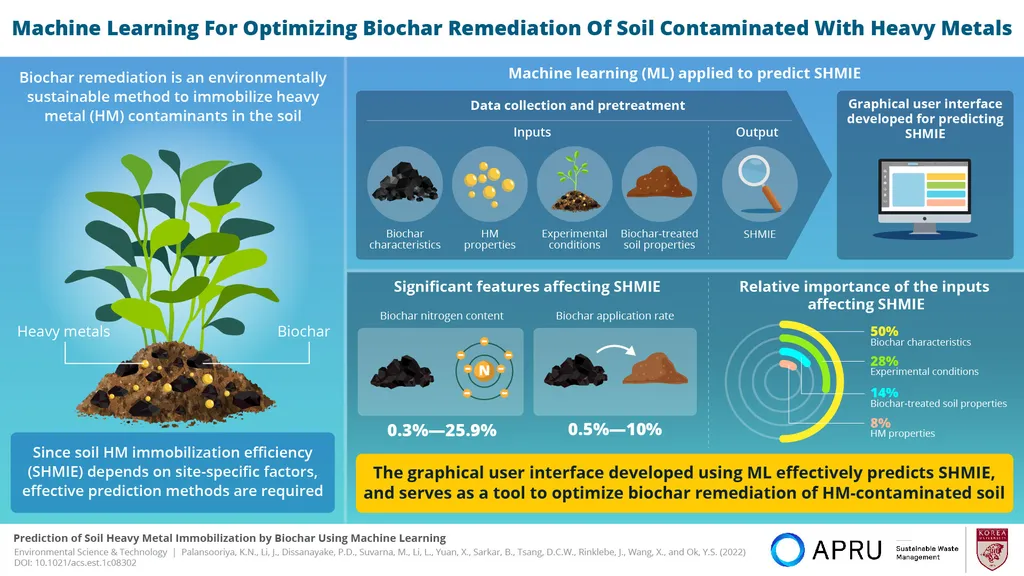In the heart of China, at the College of Forestry, Henan Agricultural University, a groundbreaking study led by Shilin Xu is revolutionizing the way we tackle heavy metal contamination in soil. The research, published in the esteemed journal *Next Materials* (which translates to *Next Materials* in English), explores the application of machine learning in the study of heavy metal remediation using biochar-based nanocomposites. This innovative approach promises to reshape the environmental remediation landscape, with significant implications for the energy sector.
Heavy metal pollution, a critical environmental and public health issue, stems from industrialization, agricultural activities, and waste disposal. These pollutants, including lead, cadmium, arsenic, and mercury, persist in the environment, disrupting microbial communities and entering the food chain. Conventional remediation techniques, such as physical removal and chemical stabilization, are often costly, inefficient, and can introduce secondary pollution. Enter biochar-based nanocomposites (BC-NPs), a promising solution due to their high surface area, functional versatility, and ability to immobilize heavy metals.
Xu’s research delves into various synthesis techniques for BC-NPs, including chemical reduction, thermal conversion, coprecipitation, ball milling, microwave treatment, and green synthesis. The study also explores remediation mechanisms such as adsorption, ion exchange, complexation, and chemical precipitation. “The integration of machine learning has been a game-changer,” Xu explains. “It allows us to predict metal immobilization efficiency, optimize BC-NP design, and map soil contamination with unprecedented accuracy.”
The results are impressive. BC-NPs exhibit up to 86% lead and 100% cadmium immobilization efficiency, outperforming unmodified biochar. Advances in big data analytics and artificial intelligence have enabled predictive modeling with accuracy exceeding 90%. This not only reduces experimental costs by 15.6% but also significantly improves process optimization.
The commercial impacts for the energy sector are substantial. Heavy metal contamination can hinder the development of renewable energy projects, particularly those involving biomass. By providing a more efficient and cost-effective remediation solution, this research could facilitate the expansion of bioenergy projects, contributing to a more sustainable energy future.
Moreover, the integration of machine learning in environmental remediation opens up new avenues for innovation. As Xu notes, “This is just the beginning. The potential for multi-disciplinary approaches integrating nanotechnology, soil science, and machine learning is vast.” Future developments could see even more sophisticated models, capable of predicting and mitigating environmental impacts in real-time.
In conclusion, Shilin Xu’s research represents a significant step forward in the field of environmental remediation. By harnessing the power of machine learning and biochar-based nanocomposites, we can tackle heavy metal pollution more effectively and efficiently. The implications for the energy sector are profound, promising a cleaner, more sustainable future. As this research continues to evolve, it will undoubtedly shape the way we approach environmental challenges, driving innovation and progress in the years to come.

